Henley Park house: built by Richard Edwards snr & jr [SLWA]

He was born about 1807, probably in the village of English Bicknor, part of the Forest of Dean in Gloucestershire, an ancient western county of England near the border with Wales. He died… well that’s one of the many facts up for debate about his life. The best guess is that he snuffed it in Bendigo hospital on the goldfields of the Australian Colony of Victoria on 11 July 1869.

The issue is that he had already been declared dead for moral purposes before 25 February 1861, when his “widow” married her second husband in the 2nd Wesleyan Chapel, Perth, Western Australia. Edwards had first married the then heavily pregnant Jane Devling back on 6 August 1850. The marriage of the 42 year old Edwards to the teenaged Devling also provided the only evidence so far that Richard Edwards had married before and that first wife was now dead. The identity of his first marriage, or if there were any children living or dead produced during the union has yet to be uncovered.
Richard Edwards’ father (also named Richard Edwards), his mother Elizabeth nee Tumlins, and five of his siblings: George, Samuel, Dinah, Joshua and Matthew, were sent to Western Australia as part of the immigration plans of Thomas Peel and former Sydney convict (unknown to Peel) Solomon Levy. They arrived in the Hooghly on 12 February 1830 and were among the many who went hungry on the beach at Clarence (Woodman Point, south of Fremantle) while Peel had his nervous breakdown back on ship. Freed from their employment contracts with Peel by the colonial government before any of them died, Richard senior eventually found himself employed by Captain Frederick Irwin and his relative William Mackie to manage and farm their lands in Upper Swan issued to them by dint of being well connected members of the Colonial ruling clique.
Edwards’ background back in Gloucestershire was as a Yeoman farmer and brickmaker, a trade carried on by his eldest son Josiah, who remained in Britain, as did another daughter, and Richard junior, for a time. As builder, Richard Edwards senior would construct many well regarded houses in the Swan Valley for both the colony’s gentry, and later on, himself. Few of these survive, but one structure that does endure is the church of All Saints in Upper Swan commenced in 1838. Both the elder Richard Edward and his wife are buried in the grounds of this church.
Richard Edwards (the junior) arrived in the Swan River Colony a year after the bulk of his family, arriving in Fremantle on the Atwick on 25 April 1831. He was 23 years old. His trade is consistently described as that of a carpenter, but from this date onwards it becomes quite difficult to identify if the sources are referring to Richard the father, or the son.
On 19 June 1833, it is presumed to be Richard Edwards — the son— who applied to leave the Swan River Colony. Whether he did, or not, is not recorded. The WA Bicentennial Dictionary then suggests that it is the father who is requesting to leave the colony during 1835. However, It was Richard Edwards, carpenter, who departs Western Australia bound for Mauritius on a ship called the Caroline on 13 March 1835.
Edwards junior was returned to Western Australia well before 1850, but exactly (or even roughly) when remains a mystery. While it is possible his first marriage happened before 1831, between 1835 and 1850 seems more likely. Something else also occurred during the intervening period. — Father and son may have had a falling out. Richard Edward (senior’s) 1848 will left the considerable rural portfolio he had accumulated to his wife and other sons with no mention in it of Richard junior.
About the same time a family property named Goodwood “formerly occupied by Richard Edwards” was offered up for lease. Was this occupied by the father or the son?
On 6 July 1849, sixteen year old Jane Devling from London arrived in Western Australia to be employed as a domestic servant. Who her employers were prior to her marriage to Richard is yet another of the many mysteries of this era.
During the Australian summer of 1850, a bushfire tore through the Upper Swan Valley. The fire started on Edwards family property. Colonel Irwin’s neighbouring estate of Henley Park was scorched, but the homestead there built by Edwards was saved. The Edwards lost everything on their own estate, bar the bed that the now sickly Richard Edwards senior had to be carried out of his burning house upon. Were it not for the fact that his clan were now owners of many farms in multiple locations, their ruin might have been complete.
At some date between 3 February 1850 and 19 March of that year, the date Richard Edwards’ father finally succumbed to his long illness, Jane Devling fell pregnant, inseminated by an unidentified male. Four months later Edwards married her.
Ellen Christina Edwards was born 11 January 1851 and Richard was stated to be her father on the registration of birth. The place of registration was Fremantle, but where Richard Edwards and his new family lived there not been identifiable.
Mrs Jane Edwards had left her husband within eighteen months of the birth of her daughter. Presumably Ellen accompanied her to her new home in Perth on the corner of Murray and King Streets. — As with so much of this period, the reason of her change of address is not explained. She may have resumed the one profession listed officially on her CV: Domestic servant. If so, she was soon to run foul of the mistress of the house. The oddity of the way this conflict played out was that it was not the servant girl summarily dismissed for being too friendly with the master of the house, it was the mistress who departed after an acrimonious fight with her husband. It was probably when she discovered that Jane was four months pregnant and that the father was her own husband, that she decided to leave.
Mrs Fanny Dyson was committed to the Perth Lunatic Asylum while the authorities desperately tried to work out how to resolve the situation. By 6 January 1853 the Colonial Surgeon, Dr Ferguson, had met with Edwards who had agreed in principle to take his wife back into his home (wherever that may have been) so Mrs Dyson could then return to hers, but by now it was far too late. Four weeks later, Jane’s second child was born. Although his birth name was registered as Edwards, he would later assume the name of the only man he would ever know as a father. James Dyson (junior) was born on 25 January 1853.
The very last record of Richard Edwards in Western Australia dates to 6 May 1853 and takes the form of a newspaper article in the local Perth Gazette. It reports he and James Dyson (father of his wife’s latest child) were fined 10 shillings for brawling in the street. He most likely left the colony between then and February 1854. The later date is a feasible cut-off point, for it is seven years later exactly that Mrs Jane Edwards and Mr James Dyson of Perth, both by then describing themselves as widowers, finally married. Seven years was length of time it took a missing person to be declared dead.
If Edwards did make his way across to the other side of Australia, to meet his destiny as one more anonymous gold miner on the Victorian goldfields, how he got there is but one more missing story.
Richard Edward’s House, Henley Brook.
9810 West Swan Road, Henley Brook
It’s fairly well attested that the Edwards’ family home burnt down in 1850. But there is still a property in the Swan Valley named Richard Edwards’ house. It was built close to the one that burnt down for the Edwards family’s mother to reside in after her husband’s death. Was Richard Edwards junior, ever welcome there?
Are you a descendent of the Edwards family?
The author of this site is currently working on a book on the Dyson family in Western Australia who Richard Edwards so catastrophically found himself entwined. I’d love to hear from anyone who has any more insights into his life and story.
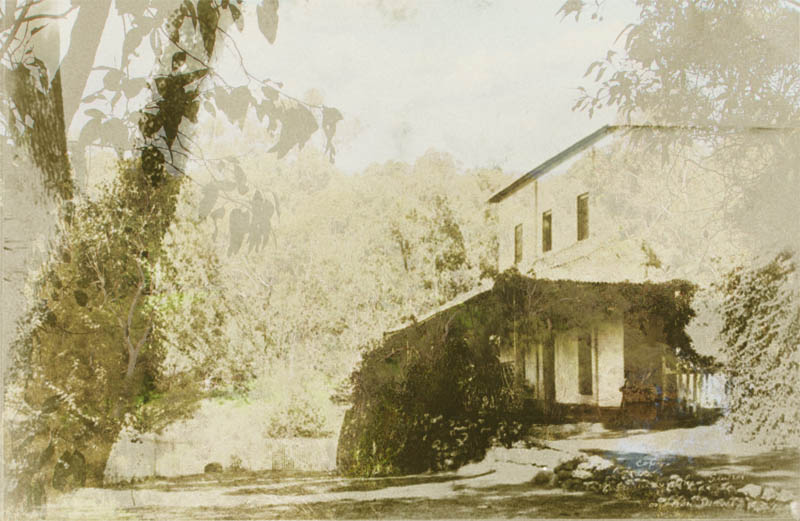
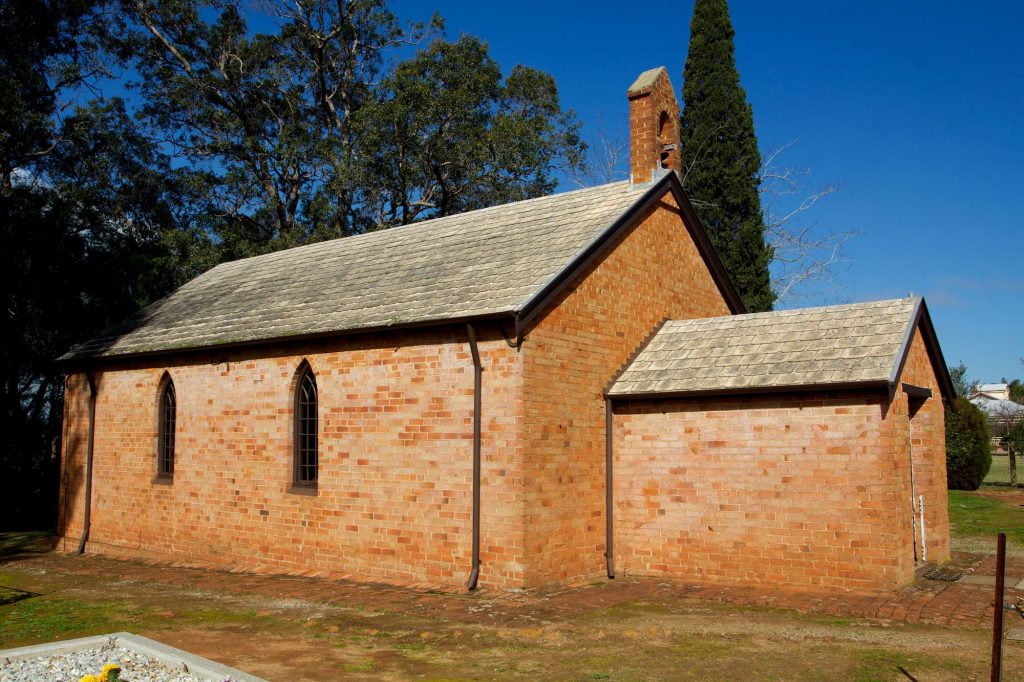
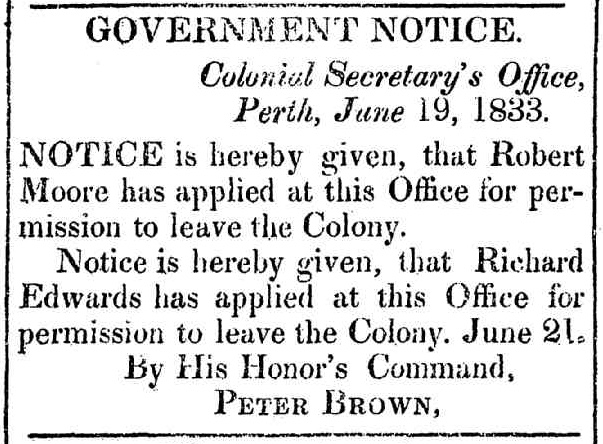

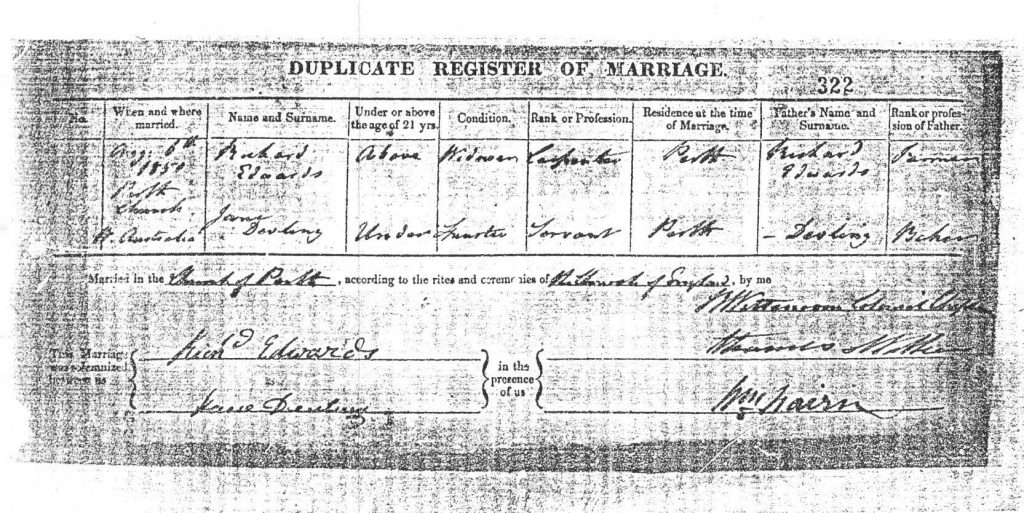
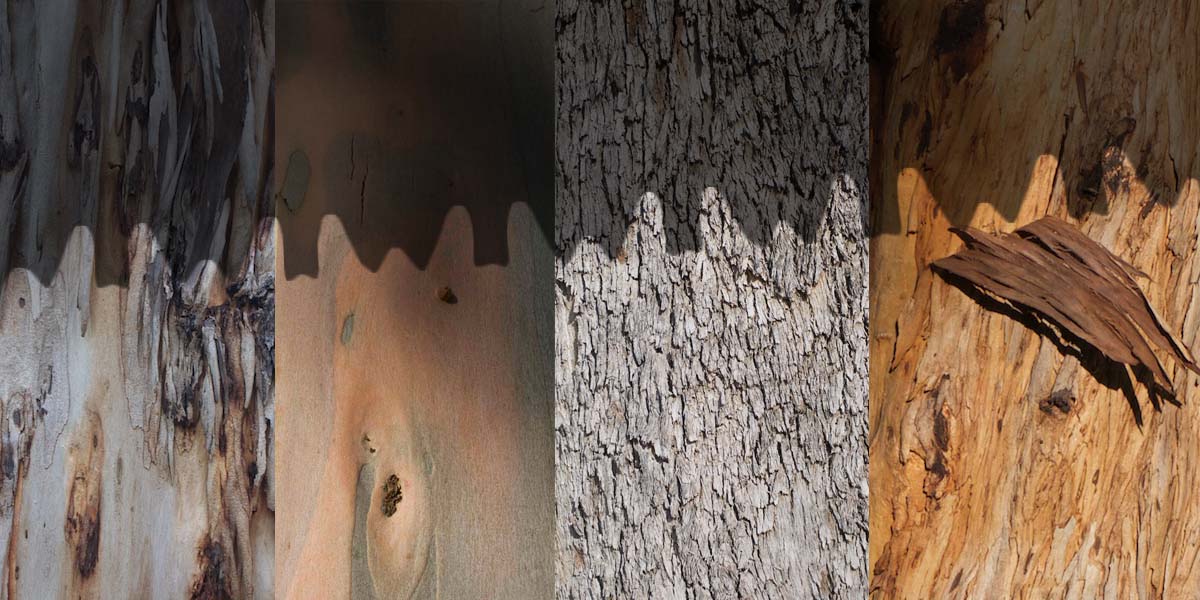

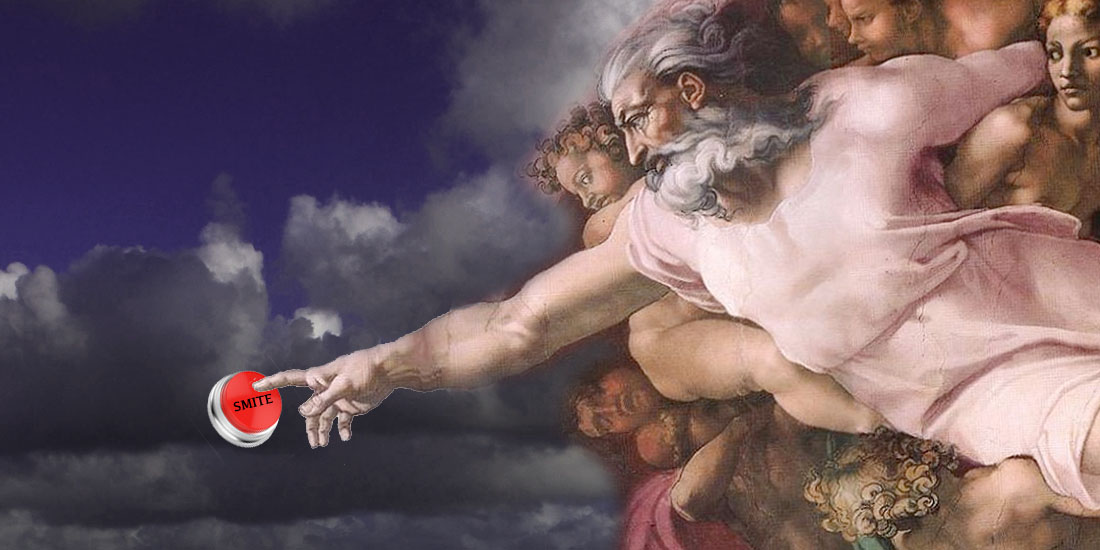
We currently own the Swan Valley property on which Richard Edwards house stands. If you would like visit you are most welcome
Richard Edwards Snr is my 4 x GGGrandfather and I would be interested in learning more about him and where he lived etc.
Great blog post! FYI I have used it as a source building Richard’s biography on wikitree at https://www.wikitree.com/wiki/Edwards-31959
Hi Alan
I have enjoyed reading your various entries; in fact I’ve missed my original vegetable planting goals this afternoon!
I am descended from Joshua Edwards b. abt 1820, brother of Richard Edwards jnr. I can’t find an email address for you or I’d send a copy of an unsourced article from an English newspaper of 1846 with records an inquiry into St Pancras Workhouse in which a Jane Devling is a young witness. While there is no evidence that this person is the one who married Richard Edwards jnr, the description of her personality matches! Happy to send it if you haven’t seen it. Cheers, Margaret
Richard Edwards Snr was my 4 X G G Gt Grandfather, (who is recorded by family as a master brick & tile maker & builder – not just a carpenter. He build homes for Irwin & Jusge Mackie, All Saints Church Upper Swan & many other significant buildings of the time. I am a descendant of his son Samuel Edwards who married Charlotte Broom, through the lineage of their daughter Dora Maria Billett (nee Edwards ) midwife of the Swan Valley in her day, her daughter Lydia Yvonne Moore (nee Billett) & her son Robert Ernest Moore (my father). My Paternal grandmother spoke often of the Swan history & there was never any mention of Richard Edwards going to a Victorian goldfield, (unless it is the son of the same name you are referring to) only the building of All Saints, farming, life on Henley Park & the devastating bushfire that burned their house & saw him die one month later. The fire started on the other side of the river & jumped the river to Henley Park where Richard Edwards, wife & several children were living. My grandmother was a keen record keeper. Goodness me. I never heard of any scandals & curious where these stories came from. Is it a case of Chinese whispers? The lineage is large considering most folk had several children in historical days. We are currently aiming to source lineage of his son Samuel’s wife named Charlotte Broom or Broome who together with Samuel had 11 children. Can anyone help?